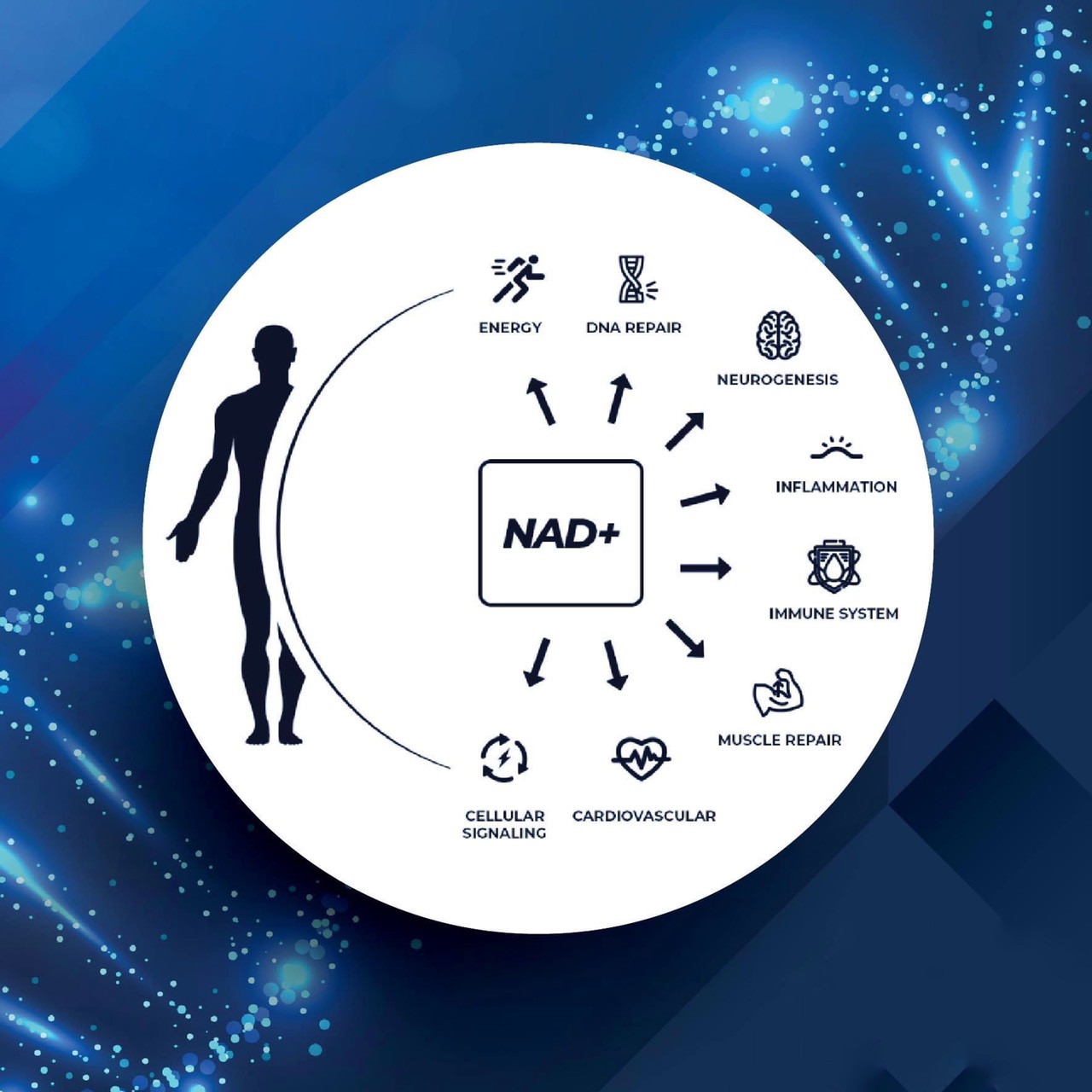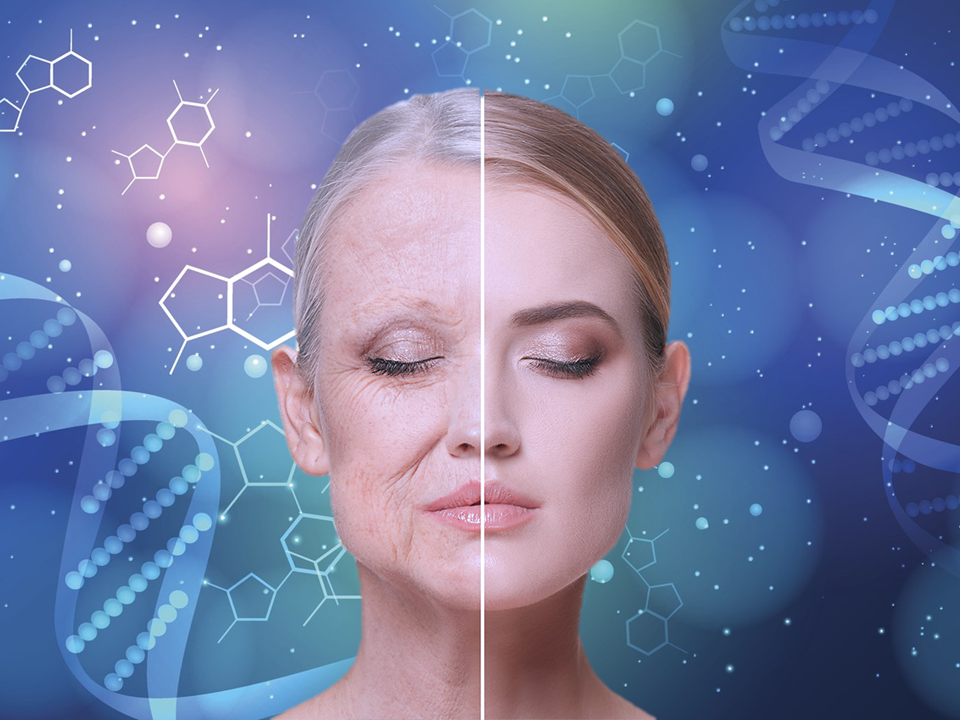
All live cells contain nicotinamide adenine dinucleotide or NAD+. It consists of the nucleotides nicotinamide mononucleotide (NMN) and adenosine diphosphate (ADP), which are joined by a pyrophosphate linkage. NAD+ may easily switch between its reduced (NADH) and oxidized (NAD+) states in response to the redox processes it takes part in.
NAD+ acts as a key player in various cellular processes, including energy metabolism, DNA repair, and cell signaling. Its involvement in these processes is mainly through its role as an electron carrier, shuttling electrons between molecules during redox reactions.
NAD+ Metabolic Pathway
NAD+ metabolism involves a complex network of biosynthetic and salvage pathways. The de novo biosynthesis of NAD+ begins with the amino acid tryptophan or nicotinic acid as precursors, eventually culminating in the formation of NMN, which is then converted to NAD+. Alternatively, cells can salvage NAD+ by utilizing precursor molecules, such as nicotinamide or nicotinic acid riboside, which are converted to NMN and then to NAD+.
The salvage pathway is particularly important in maintaining NAD+ levels, especially during conditions of high energy demand or limited precursor availability. It allows cells to recycle and reuse NAD+ molecules, preventing their depletion and ensuring a continuous supply for essential metabolic processes.
Potential Benefits
NAD+ is important for species’ mitochondrial maintenance and gene regulation regarding aging. However, the level of NAD+ in our body declines drastically with age. “As we get older, we lose NAD+. By the time you’re 50, you have about half the level you once had when you were 20,” says David Sinclair of Harvard University in an interview.
Studies have shown the decrease of the molecule associates with age-related diseases including accelerated aging, metabolic disorders, heart disease, and neurodegeneration. Low levels of NAD+ is associated with age-related disease due to less functional metabolism. But replenishing NAD+ levels has presented
anti-aging effects in animal models, showing promising results in reversing age-related diseases, increasing lifespan and healthspan.

- Aging
Known as the “guardians of genomes,” sirtuins are genes that protect organisms, from plants to mammals, against deterioration and diseases. When the genes sense the body is under physical stress, such as exercising or hunger, it sends out troops to defend the body. Sirtuins sustain genome integrity, promote DNA repair and have shown anti-aging related properties in model animals like increasing lifespan.

NAD+ is the fuel that drives the genes to work. But like a car cannot drive without its fuel, sirtuins require NAD+. Results from studies show that raising NAD+ level in the body activates sirtuins and increases lifespan in yeast, worms, and mice. Although NAD+ replenishing shows promising results in animal models, scientists are still studying how these results can translate to humans.
- Muscle function
As the powerhouse of the body, mitochondrial function is crucial for our exercise performance. NAD+ is one of the keys to maintaining healthy mitochondria and steady energy output.
Increasing NAD+ levels in muscle can improve its mitochondria and fitness in mice. Other studies also show that mice that take NAD+ boosters are leaner and can run farther on the treadmill, showing a higher exercise capacity. Aged animals that have a higher level of NAD+ outperforms its peers.
- Metabolic disorders
Declared as an epidemic by the World Health Organization (WHO), obesity is one of the most common diseases in modern society. Obesity can lead to other metabolic disorders such as diabetes, which killed 1.6 million people around the globe in 2016.
Aging and high-fat diet reduce the level of NAD+ in the body. Studies have shown that taking NAD+ boosters can alleviate diet-associated and age-associated weight gain in mice and improve their exercise capacity, even in aged mice. Other studies even reversed the diabetes effect in female mice, showing new strategies to fight metabolic disorders.
- Heart function
The elasticity of the arteries acts as a buffer between pressure waves sent out by heartbeats. But arteries stiffen as we age, contributing to high blood pressure, the most important risk factors for cardiovascular disease. One person dies from cardiovascular disease every 37 seconds in the United States alone, CDC reports.
High blood pressure can cause an enlarged heart and blocked arteries that lead to strokes. Boosting NAD+ levels gives protection to the heart, improving cardiac functions. In mice, NAD+ boosters have replenished NAD+ levels in the heart to baseline levels and prevented injuries to the heart caused by a lack of blood flow. Other studies have shown that NAD+ boosters can protect mice from abnormal heart enlargement.
- Neurodegeneration
By 2050, the world’s population aged 60 and older is projected to total 2 billion, nearly double the number of 2015, according to WHO. People worldwide are living longer. However, aging is the main risk factor for many neurodegenerative diseases including Parkinson’s disease and Alzheimer’s, causing cognitive impairment.
In mice with Alzheimer’s, raising the NAD+ level can decrease protein build up that disrupts cell communication and increases cognitive function. Boosting NAD+ levels also protects brain cells from dying when there’s insufficient blood flow to the brain. Many studies in animal models present new prospects of helping the brain age healthy and defend against neurodegeneration.

Pls kindly contact Alisa for COA and price details via sales02@imaherb.com
Post time: Dec-26-2023




